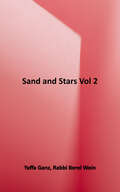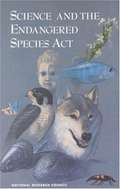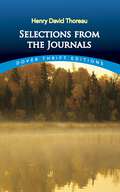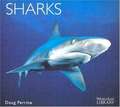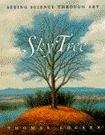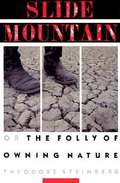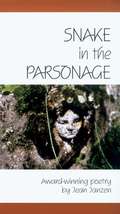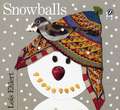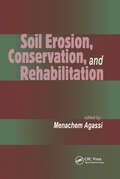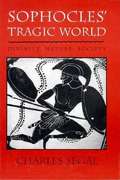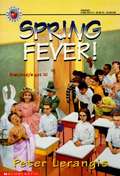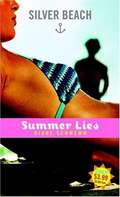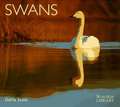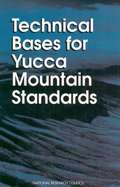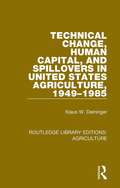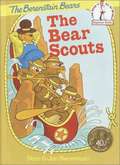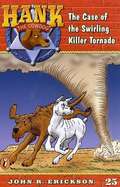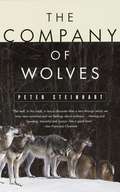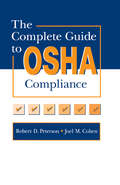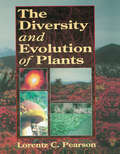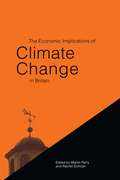- Table View
- List View
Robin at Hickory Street (Backyard Books)
by Dana Meachen RauWhile searching for a new home where he can begin a family, Robin often hears "no vacancy" and "no trespassing" chirped at him. Pictures are described. Robin at Hickory Street is one of the SMITHSONIAN'S BACKYARD books, a series of books to excite children about animals they might see outside their windows developed by National Museum of Natural History (a Smithsonian Institution Museum). It is a colorful science book for children from preschool through second grade.
Sand and Stars: The Jewish Journey through Time, Vol 2
by Berel Wein Yaffa GanzSand and Stars: The Jewish Journey Through Time: From the Sixteenth Century to the Present: A Jewish History for Young People Book Description Yaffa Ganz has contributed to Sand and Stars: The Jewish Journey Through Time: From the Sixteenth Century to the Present: A Jewish History for Young People as an author. Yaffa Ganz has written over 40 titles for children, and her books have been translated into half a dozen languages. Over 500,000 copies of her books have been sold worldwide, and her titles comprise a large selection of today's Jewish juvenile bookshelf. Berel Wein has contributed to Sand and Stars: The Jewish Journey Through Time: From the Sixteenth Century to the Present: A Jewish History for Young People. Wein retired from his positions as a congregational rabbi and yeshivah dean. He lectures regularly and produces videos on Jewish history.
Science and the Endangered Species Act
by Committee on Scientific Issues in the Endangered Species ActThe Endangered Species Act (ESA) is a far-reaching law that has sparked intense controversies over the use of public lands, the rights of property owners, and economic versus environmental benefits.In this volume a distinguished committee focuses on the science underlying the ESA and offers recommendations for making the act more effective.The committee provides an overview of what scientists know about extinction--and what this understanding means to implementation of the ESA. Habitat--its destruction, conservation, and fundamental importance to the ESA--is explored in detail.The book analyzes Concepts of species--how the term "species" arose and how it has been interpreted for purposes of the ESA. Conflicts between species when individual species are identified for protection, including several case studies. Assessment of extinction risk and decisions under the ESA--how these decisions can be made more effectively. The book concludes with a look beyond the Endangered Species Act and suggests additional means of biological conservation and ways to reduce conflicts. It will be useful to policymakers, regulators, scientists, natural-resource managers, industry and environmental organizations, and those interested in biological conservation.
Sea Turtles
by Gail Gibbons<p>Dive into the world's oceans to explore the dangerous lives of one of the oldest living animals. <p>Descended from enormous prehistoric creatures, sea turtles are fascinating. Hatched from eggs smaller than a baseball, some can grow to weigh over a thousand pounds. Once adults, they can live to be around 100 years old. And when it's time to nest, they migrate more than 1,000 miles. <p>With colorful, clear illustrations and straightforward text, Gail Gibbons introduces the eight kinds of sea turtles living in the ocean today. Learn the similarities and differences with labeled diagrams and experience the hatching of the tiny turtle babies with detailed illustrations. This updated edition now includes the most up-to-date information about these beloved reptiles, as reviewed by an expert vetter in the field of herpetology. <p>Sea Turtles also gives young readers an accessible overview of how the lives of these large reptiles have become threatened and discusses the conservation efforts currently taking place. Ideal for aspiring oceanographers, this brightly-illustrated book is a perfect introduction to the subject.</p>
Selections from the Journals: An Annotated Selection From The Journal Of Henry D. Thoreau (Dover Thrift Editions: Philosophy Ser.)
by Henry David Thoreau Walter HardingNoted Thoreau scholar offers rich selection of favorite excerpts from voluminous Journals. Masterly meditations on man, society, nature and many other subjects--expressed with verve and vigor in some of the most poetic prose in American literature. Perfect introduction to the great naturalist and his thought. Introduction.
Sharks (Worldlife Library)
by Doug PerrineFrom the Book Jacket: There are some 375 recognised species of sharks around the world, with exciting discoveries of new species every year. Like so many creatures of the underwater world, researchers are only just beginning to understand sharks and their life in a delicate marine habitat. SHARKS explores the changing times of these often misunderstood creatures. Popularly described as 'killers' and 'primitive', recent research reveals that they are rarely dangerous to humans and that they have evolved into sophisticated hunters, with unique adaptations to sustain them as top marine predators. Despite their resilience, sharks have not yet developed a protection against unnatural pressures from mankind. Fishing, sporting interests and pollution now account for the death of some 100 million sharks every year. Clearly, swift and far-reaching conservation measures are necessary to secure the healthy future of sharks, and the priceless balance of their marine environment. Discover the world's most-loved animals in the Worldlife Library by Voyageur Press. This highly acclaimed series brings you the latest research and the personal experiences of international authorities and leading naturalists.
She's Wearing a Dead Bird on Her Head!
by Kathryn Lasky David CatrowWhen women's hats lavishly bedecked with feathers, wings, and whole dead birds became the rage, Harriet Hemenway and Minna Hall started a movement to stamp out a practice that was making women look absurd--and driving many birds to extinction. This entertaining picture book tells how, in 1896, their grassroots effort became the Massachusetts Audubon Society.
Sky Tree: Seeing Science Through Art
by Thomas LockerA tree stands on a hill by a river. As the sky changes, so does the tree, its branches filling with clouds, stars, snow, birds, mists, and the golden spring sun. One tree can mean many things. Thomas Locker's lyrical text records the changes in the tree's world just as simply as a child might observe them, and his magnificent paintings crystallize the natural phenomena that embellish the tree on each page. Questions at the bottom of each page lead to a unique discussion in the back of the book, where art and science are intertwined, and further depth is added to the wonder of Sky Tree.
Slide Mountain, or, The Folly of Owning Nature
by Theodore SteinbergThe drive to own the natural world in twentieth-century America seems virtually limitless. Signs of this national penchant for possessing nature are everywhere--from suburban picket fences to elaborate schemes to own underground water, clouds, even the ocean floor.
Snake in the Parsonage: Award-winning Poetry
by Jean JanzenSnake in the Parsonage includes the poems for which Jean Janzen received The Creative Writing Fellowship in Poetry from the National Endowment for the Arts. Selected by a panel of major poets. Once again Jean Janzen shows us life -- colored deeply and in irrepressible light. She finds both ecstasy and incompleteness -- while waiting, at the piano and in the halls of the old people's home, lying in the field, shrieking in the cellar, standing at the blackboard.
Snowballs
by Lois EhlertPull on your mittens and head outside with Lois Ehlert for a snowball day! Grab some snow and start rolling. With a few found objects, like buttons and fabric and seeds, and a little imagination, you can create a whole family out of snow. Ehlert uses collages of cut paper and vibrant, textured objects to dazzling effect in her tribute to building a snowman--and snowgirl and snowcat.
Soil Erosion, Conservation, and Rehabilitation
by Agassi,Discusses the latest information regarding the processes and mechanisms responsible for runoff and erosion by water in arable lands--detailing state-of-the-art water and soil conservation methods. Elucidates the rehabilitation of agricultural lands depleted by human activity.
Sophocles' Tragic World: Divinity, Nature, Society
by Charles SegalIn a series of engagingly written interconnected essays, Segal studies five of Sophocles' seven extant plays: Ajax, Oedipus Tyrannus, Philoctetes, Antigone, and the often neglected Trachinian Women.
Spring Fever!
by Peter LerangisEverybody made fun of the strange Ghiek kids at first. But that was before they offered to grant wishes to their classmates at Hopnoodle Junior High. And soon, teachers are refereeing skateboard races in the hall, kids are taking classes in video and Frisbee, and the principal's on Rollerblades. Who ARE these kids, and where are they from? Is all this craziness just plain fun, or will it mean the end of Hopnoodle -- and everyone in it?
Summer Lies (Silver Beach Trilogy #2)
by Diane SchwemmThings heat up on the shores of Silver Beach... Ethan Wells falls in love with Laura McIver, a beautiful, strong-minded girl who'll keep him out of Charlotte's clutches forever... or so he thinks. Elli Wells finally opens her heart to Sam DeWitt... until she unearths the shock of a lifetime. Charlotte Ransom, betrayed by Ethan, vows she'll sooner see Laura McIver dead than let her win Ethan's heart... and she means it. Sam DeWitt, desperate to keep Elli's love, hides a secret that could tear them apart.
Swans (WorldLife Library)
by Dafila ScottIn many legends and myths, swans represent beauty, purity. Dafila Scott details everything from the appearances of these graceful creatures in myth to their ecology and life history. All eight kinds of swans are described, including information on their distribution worldwide, their population sizes, and features unique to each species. The book also introduces breeding, migration, social behavior, and mortality, along with conservation, domestication, and management issues. Gorgeous color photographs accompany the text.
Technical Bases for Yucca Mountain Standards
by Committee on Technical Bases for Yucca Mountain StandardsThe United States currently has no place to dispose of the high-level radioactive waste resulting from the production of the nuclear weapons and the operation of nuclear electronic power plants. The only option under formal consideration at this time is to place the waste in an underground geologic repository at Yucca Mountain in Nevada. However, there is strong public debate about whether such a repository could protect humans from the radioactive waste that will be dangerous for many thousands of years. This book shows the extent to which our scientific knowledge can guide the federal government in developing a standard to protect the health of the public from wastes in such a repository at Yucca Mountain. The U.S. Environmental Protection Agency is required to use the recommendations presented in this book as it develops its standard.
Technical Change, Human Capital, and Spillovers in United States Agriculture, 1949-1985 (Routledge Library Editions: Agriculture #17)
by Klaus W. DeiningerFirst published in 1995. Based on a detailed adjustment for the quality of inputs and outputs, this study develops state-level measures for total factor productivity growth in US agriculture which are used to determine (i) the presence and determinants of convergence across states; (ii) the contribution of individual factors of production to productivity growth; (iii) the importance of spillovers across states; (iv) the economic effects of, returns to, and factor biases of research and extension. This title will be of great interest to students of economics and agriculture.
The Bear Scouts
by Stan Berenstain Jan BerenstainWill Papa Bear or the Bear Scout guide book get the scouts through all of their camping activities? Young readers will enjoy reading this book aloud. This file should make a fine embossed braille copy.
The Case of the Swirling Killer Tornado (Hank the Cowdog Series, #25)
by John R. EricksonAttacked by an invisible enemy, Hank rushes to the house to make sure his family is safe, but the house is in the path of a killer tornado and Hank gets trapped inside the house.
The Christmas Blizzard
by Helen KettemanOld Mr. Jenkins tells Sissy about the year when he was a boy that Santa moved his workshop, elves, Mrs. Clause, and the reindeer and polar bears to their town because it was too hot at the North Pole. The trouble was they couldn't work unless it snowed. Young Maynard Jenkins always followed by his dog, gets a little too much help and after a great wind, it's so icy the reindeer keep falling down. Then the snow starts and doesn't stop. Find out how Santa will be able to make Christmas deliveries and how the town gets a new name. The funny pictures are described. This story is a tall tale.
The Company of Wolves
by Peter SteinhartAs wolves return to their old territory in Yellowstone National Park, their presence is reawakening passions as ancient as their tangled relations with human beings. This authoritative and eloquent book coaxes the wolf out from its camouflage of myth and reveals the depth of its kinship with humanity, which shares this animal's complex complex social organization, intense family ties, and predatory streak.
The Complete Guide to OSHA Compliance
by Joel M. Cohen Robert D. PetersonThe Complete Guide to OSHA Compliance is an easy-to-understand, one-stop resource designed to help safety professionals, industrial hygienists, and human resources personnel ensure compliance with existing and upcoming OSHA regulations. This essential book explains employer and employee rights and responsibilities, and it provides everything you need to know about employer standards and standards for specific operations. The Complete Guide to OSHA Compliance describes the process of injury/illness recordkeeping and the reporting system required by OSHA. It also explains how to conduct a self-audit to determine whether a company is in full compliance. Furthermore, it informs companies of their rights in an inspection and explains how to handle citations and appeals, should they arise.
The Diversity and Evolution of Plants
by Lorentz C. PearsonThis exciting new textbook examines the concepts of evolution as the underlying cause of the rich diversity of life on earth-and our danger of losing that rich diversity. Written as a college textbook, The Diversity and Evolution of Plants introduces the great variety of life during past ages, manifested by the fossil record, using a new natural classification system. It begins in the Proterozoic Era, when bacteria and bluegreen algae first appeared, and continues through the explosions of new marine forms in the Helikian and Hadrynian Periods, land plants in the Devonian, and flowering plants in the Cretaceous. Following an introduction, the three subkingdoms of plants are discussed. Each chapter covers one of the eleven divisions of plants and begins with an interesting vignette of a plant typical of that division. A section on each of the classes within the division follows. Each section describes where the groups of plants are found and their distinguishing features. Discussions in each section include phylogeny and classification, general morphology, and physiology, ecological significance, economic uses, and potential for research. Suggested readings and student exercises are found at the end of each chapter.
The Economic Implications of Climate Change in Britain
by Martin ParryClimate change could have a substantial economic impact, particularly on coastal states where seas level rises will be felt most strongly. Among these, the British Isles are likely to be significantly affected, and they provide an excellent case study of the consequences for specific sectors of the economy. In this book, leading experts - including several authors of reports by the Intergovernmental Panel on Climate Change and the UK Climate Change Impacts Review Group - examine the background and alternative scenarios for change, as well as its implications. They look in detail at water supply and management, agriculture and land use, energy, and the finance and insurance sector. In each case, they show how current activities will have to adapt and they conclude by evaluating the arguments for prevention now vs adaptation later. The changes in store could be huge, requiring the attention of academics and professionals from a wide range of disciplines and industries, as well as government action. This book makes a major contribution to understanding what is at stake.

